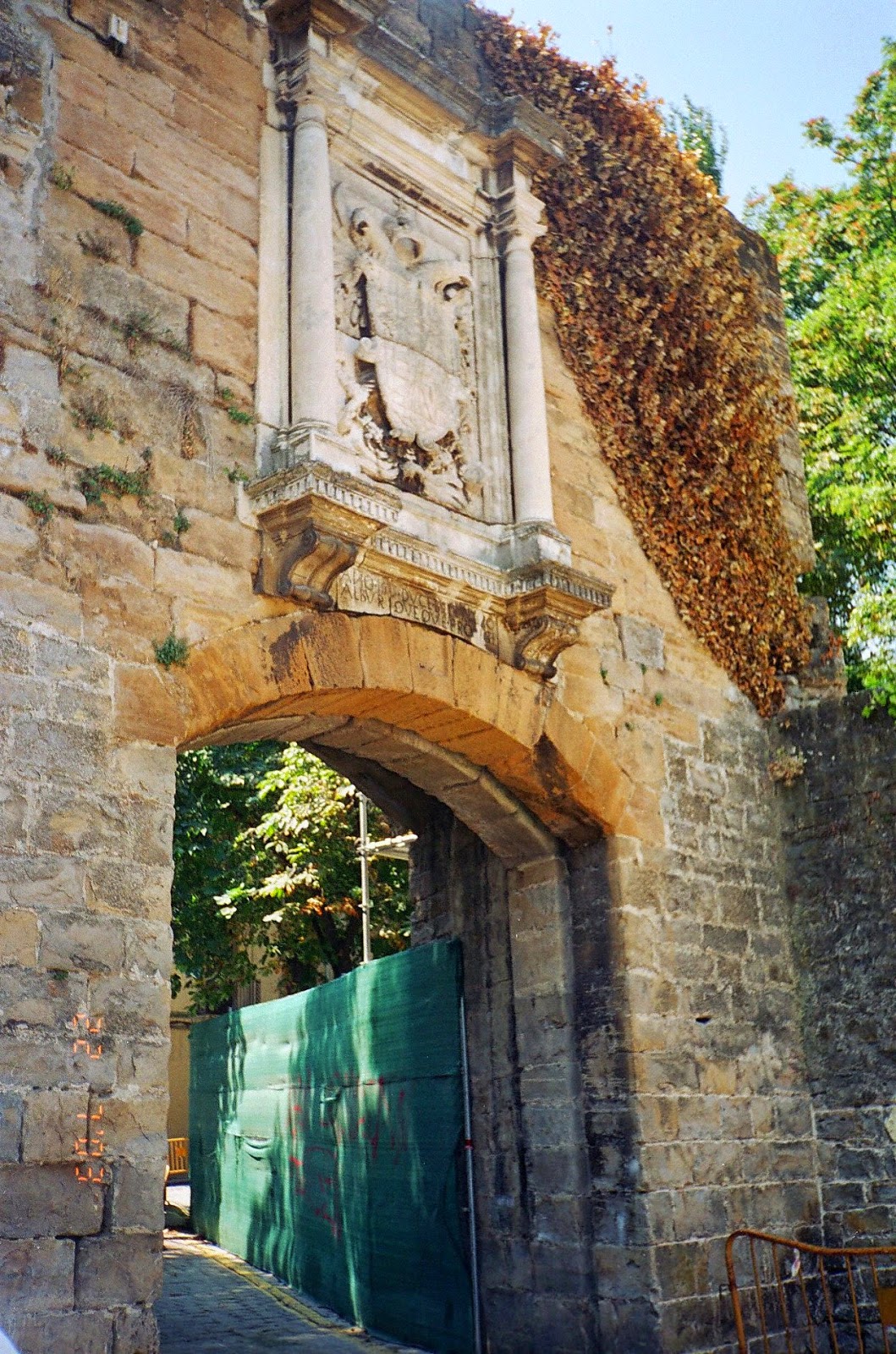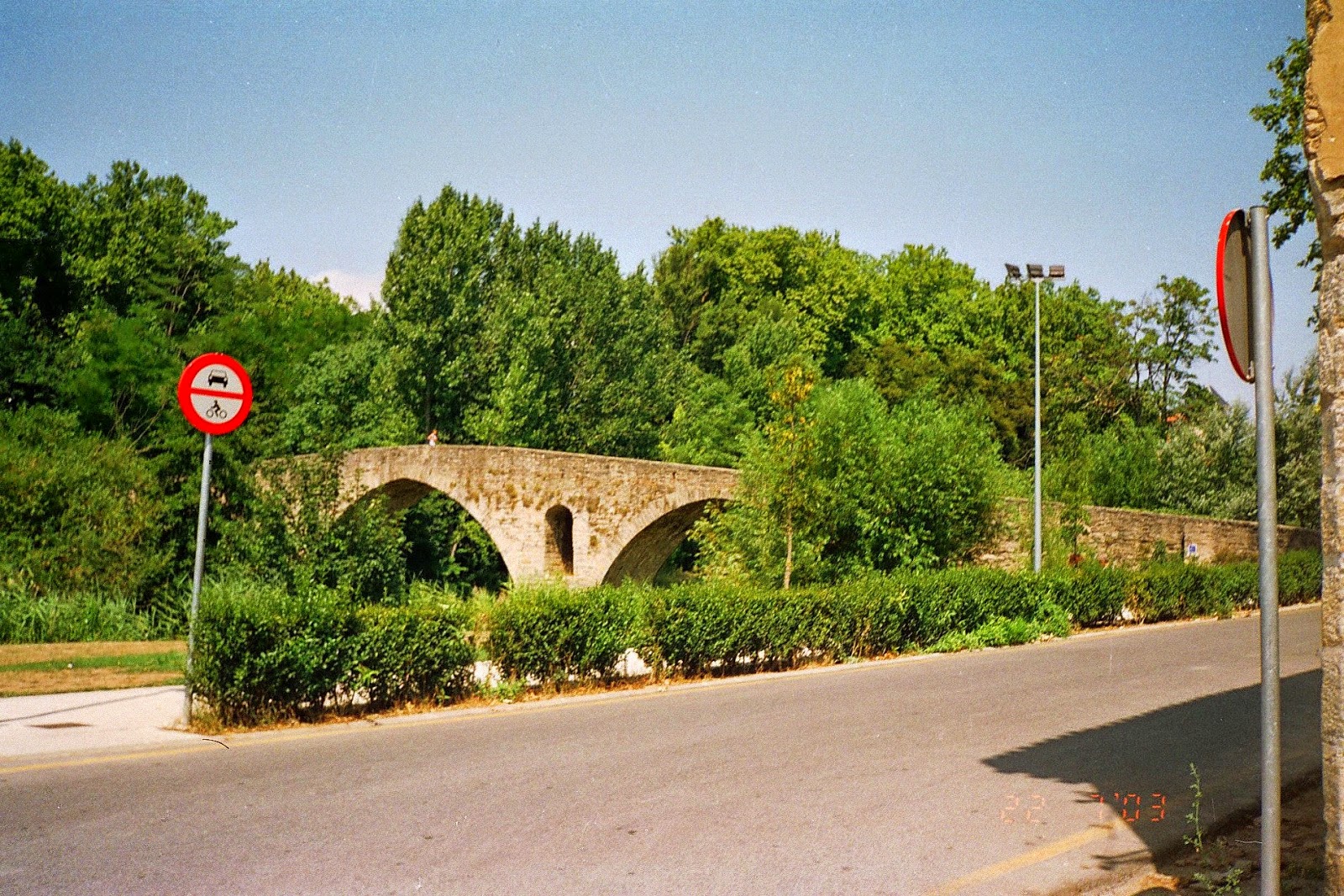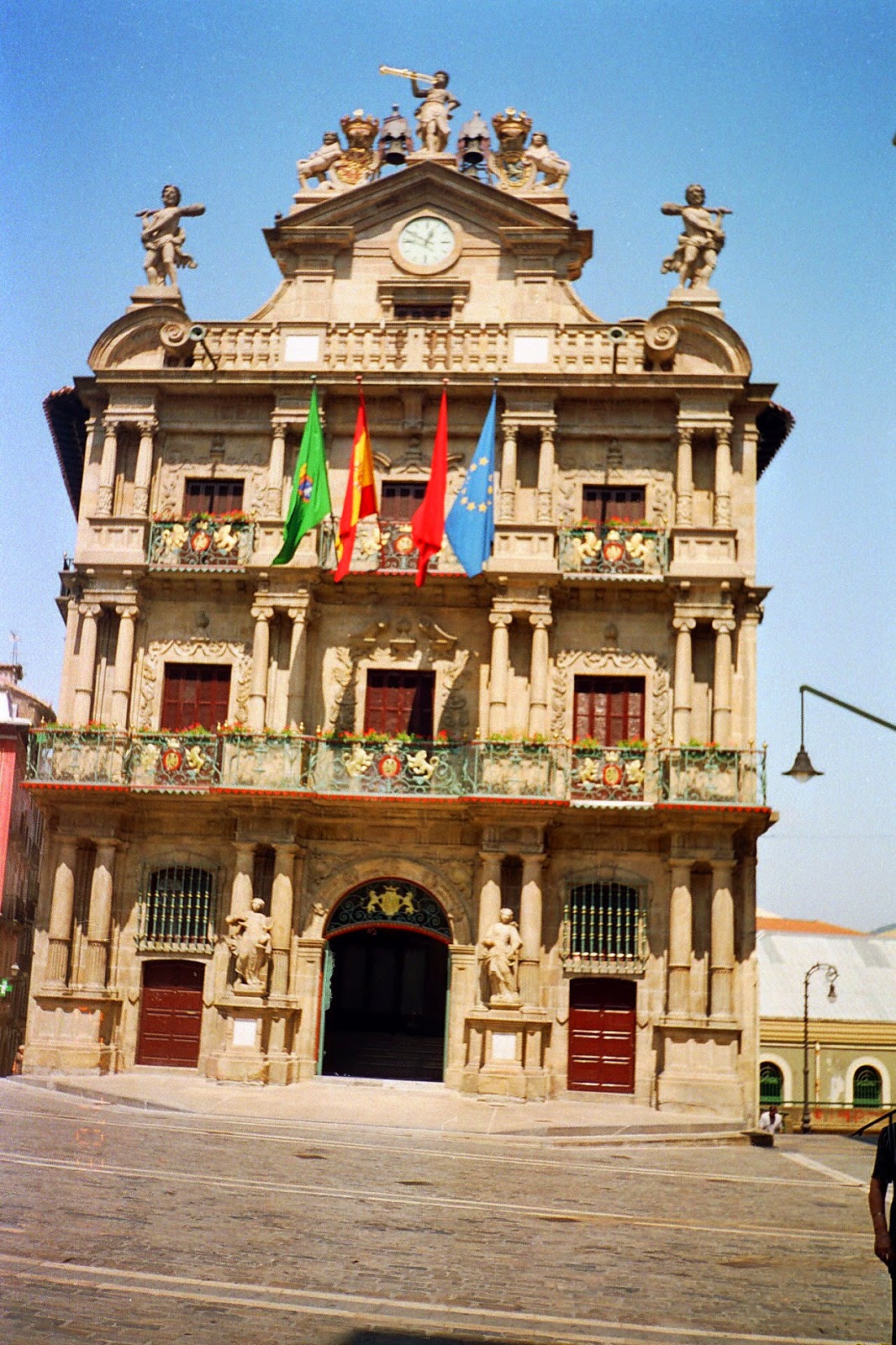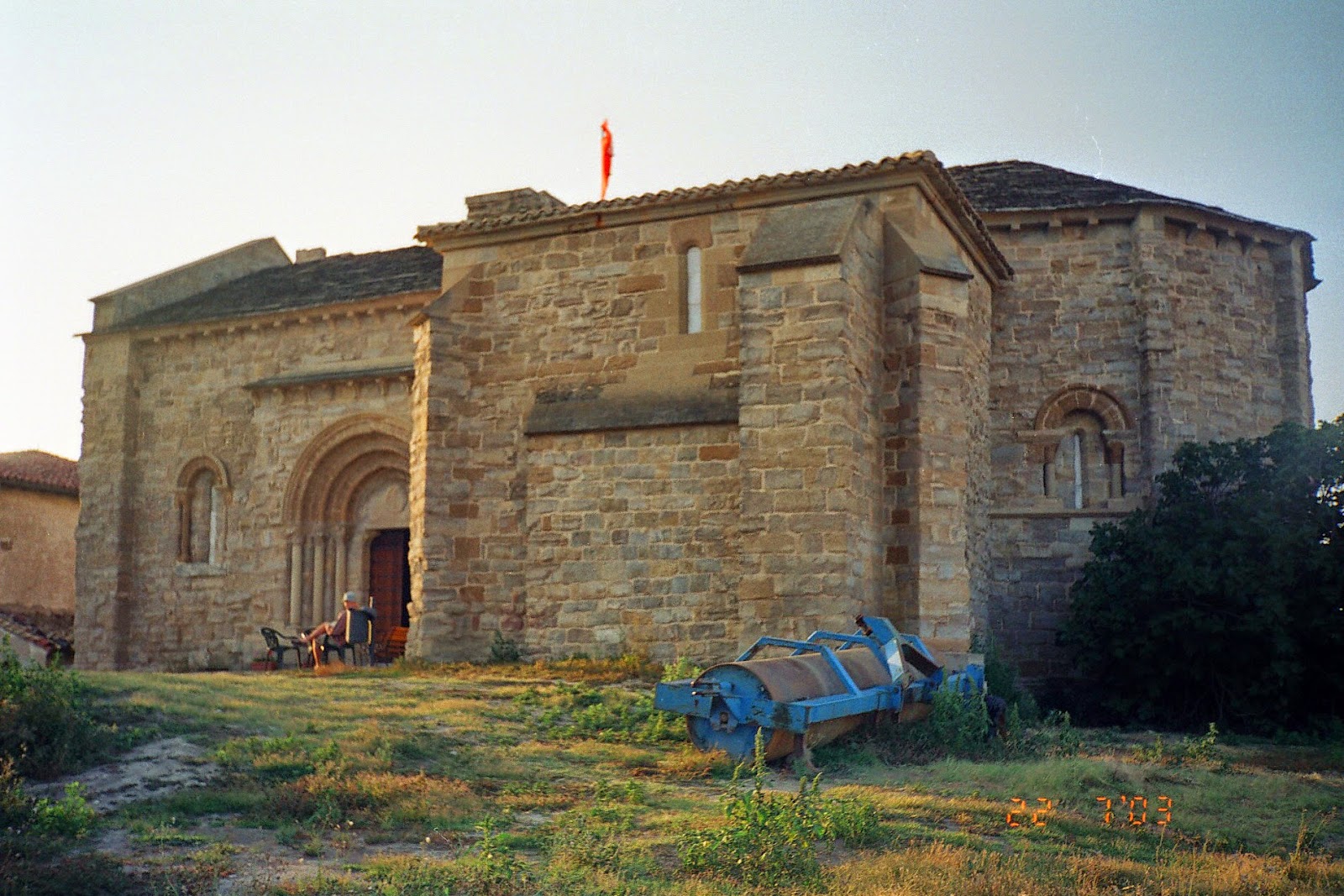Way of Saint James, second stage: from Larrasoaña to Cizur Menor
An unexpected brightness awakens you. Gradually, you become aware of your surroundings; the sleeping bag enveloping your body, the murmur of the river flowing a few meters away, and the silhouette of some pilgrims crossing the bridge as your eyes, now open, begin to distinguish shapes. You glance at the alarm clock: 7 in the morning! Annoyed, not knowing exactly at whom, you think you’ve foolishly lost almost two hours. Did the alarm, set for 5:30, fail, or did you succumb to sleep? None of that; simply, the sound of the water that helped you fall asleep drowned out the faint beep of the alarm.
You stretch, grumpy, inside the sleeping bag, while trying to change your clothes, when you hear a nearby bark. The strange ensemble that you and your bag form has attracted the attention of a stray dog, which approaches running and barking towards you. Frightened, you reach for your walking stick and start hitting the ground to scare it away. The dog, brown, of indeterminate breed, and friendly-looking, moves nervously around you, barking, and taking advantage of any gap left by your stick to get closer and lick you. The threat has passed, and you have become friends. A little calmer, both of you, you pet its head while you compose yourself before putting on your boots and starting the day.
Only one thing comforts you, and that is that despite having slept poorly, in a sleeping bag by the river, your body is much less sore than when you went to bed. The restorative effect of sleep will be one of the things the journey teaches you.
Since you are short on time, you won’t be able to afford the luxury of making as many stops as yesterday, so you postpone breakfast until you reach a service area, next to the road. It’s one of those gas stations with ample spaces for trucks and picnic tables outside. There, sitting, you envy the life of the truck drivers, who cover in a few hours the same distance that you cover in several days of weary march.
You look at the map and check that it’s 9 o’clock and you haven’t even reached 20% of your day’s journey. You start to doubt yourself and your strength. Desperate to see that the path crosses the straight road several times, you decide to ignore the indications and transit to the next town by the side road. It’s not much, but you save a few meters that you are happy to subtract from the route.
You look at the map and check that it’s 9 o’clock and you haven’t even reached 20% of your day’s journey. You start to doubt yourself and your strength. Desperate to see that the path crosses the straight road several times, you decide to ignore the indications and transit to the next town by the side road. It’s not much, but you save a few meters that you are happy to subtract from the route.
Upon reaching Trinidad del Arre, you cross the narrow bridge and enter the small hermitage. Surrounded by coolness and darkness, you ignore the presence of other pilgrims and your strength seems to return. You need it, as you’re halfway through the stage and you feel more tired than yesterday when you reached your destination. Upon leaving, you recognize one of the pilgrims with whom you had dinner in Larrasoaña. After exchanging greetings, you continue forward through what appears to be an urban area.
Reentering civilization, with sidewalks and paved streets to walk on, seems less tiring and gives you new energy. Gradually, you begin to regain your spirits. You see a kiosk where a retiree is buying a newspaper; bars, cafes; housewives shopping and children who - it’s summer - are going to some kind of review class. Observing daily life, looking for patterns in urban life, distracts you much more than contemplating nature, so before you know it, you’re at the gates of Pamplona.
Next to the bridge, you see a municipal police car stopped. The map does not clearly indicate the distance from this point to Cizur Menor, so you ask them. Surprised, they tell you it’s about 5 kms. They offer to take you, but you decline the offer with surprise. Don’t fool yourself, you’re worn out and you look worn out.
You cross the bridge and climb the cobblestone hill that gives access to the city through the Zumalacárregui gate. The name of the Carlist hero evokes the ‘romantic’ wars of the 19th century. Of course, you’re young, so you have idealized the heroes of the losing side. You imagine the exit of the then Colonel Zumalacárregui through that same gate, known then as the gate of France or the gate of Carmen, to lead the Carlist troops in Arguil, and you stop to photograph the monument.
 Zumalacárregui Gate, entrance to the walled city in Pamplona
Zumalacárregui Gate, entrance to the walled city in Pamplona
Now, yes, you have arrived in Pamplona, finally a major city on your path. There will be more, and all will be a cause for joy, and sometimes rest. A select group of milestones to reach before reaching the goal. From now on, you can ignore the signs that mark the path through the streets of Pamplona. You know you have to get to the Cathedral, so you delve into the narrow streets of the old town until you come face to face, climbing a narrow uphill street, with the cathedral of Pamplona.
The first thing that catches your attention is the state of the portico of the main facade. The huge blocks of stone that form the beautiful neoclassical arch are slightly separated, and between the open joints of the blocks grow climbing plants that could well be ivy or weeds. The second thing that catches your attention is that the entrance door is closed. You have to enter through a side door, which gives access to the cloister, where they charge for entry. They have the detail of letting pilgrims in for free, but only to the cloister, as the cathedral is already closed. Without much enthusiasm, you take a walk around the cloister, take a look at the nave of the cathedral through the crack of a side door, and return to the street.
It’s not the first time you’ve visited Pamplona, but the maze of streets that make up the old town ends up confusing you until you find the signs of the path again. Following them, and leaving the town hall behind, you leave theold town at a point flanked by green avenues and more modern buildings. However, before leaving the shade of these tall buildings, the ancient world makes its appearance again condensed in the Citadel of Pamplona. Judging by how long it takes you to go around it, it seems to you a construction of enormous dimensions.
You lose sight of the signs of the path again, so following the map you carry with you, you head down a long and modern avenue to the University Clinic of Navarra and the Faculty of Medicine, a place you already know. You also know the university dining hall, a building within the campus itself that you can access by crossing the Sadar, where you can eat for a reasonable price - much cheaper than the “pilgrim’s menus” you’ve seen so far. You queue among summer practice students, teachers, campus staff and, possibly, some worker from the environment - Patricia, the girl from Pamplona, told you yesterday that she worked in a nearby bank and used to go to eat there, so you take a look with the frustrated hope of seeing some interesting girl -; however, you do not distinguish any other pilgrim.”
After eating, you go to the main building of the campus, the rector’s office, a modern building that dignifies neoclassical architecture, to get your credential stamped. Stamping it at the hostels is more than enough, but you’ve just started the journey and you’re excited to collect stamps. Back on the path, encouraged by the proximity of the hostel despite being short on time, you cross paths with a family and clearly hear a little girl say to her mother - “A pilgrim”. You smile.
The short distance between the Campus and Cizur Menor seems to shorten even more thanks to a pleasant stretch that runs between crop fields. You can see the small village in the background, with a flag of the Order of Saint John, waving in the small church. The pilgrim’s hostel you’re heading to is next to that small church.
A receptionist with little experience welcomes you and hastily offers you a seat and water, but you need to take off your heavy backpack and catch your breath before responding. Her colleague takes it much more calmly.
You pay the registration fee and, since you’ve already eaten, you lie down on the bunk bed intending to sleep for a while. In the bunk next to you, there are two pilgrims from Ponferrada who intend to do the journey in stages, dedicating a week each time. When you tell them that you intend to do the complete journey, one of them offers to be your guide when you reach Ponferrada. Grateful, you note down his phone number in your notebook.
After the brief nap, you go to the other hostel in the village, run by a very charismatic lady, where you find the rest of the group. They are glad to see you and you explain that in the end, you slept next to the river. They tell you how surprised they were to see someone sleeping next to the river when they crossed the bridge of Larrasoaña in the morning, but you don’t think that the humidity has anything to do with sleeping well or badly, and you’re glad you didn’t spend the night in a crowded hostel.
You all go together to the pool in Cizur Mayor, for which you have to walk for a good while. It’s worth it, as you have a good afternoon. The water is not as cold as in the Arga River, but the first dip is freezing. You move away from the group to swim for a while and stay alone in the pool, abstracted, looking at the sky. You see a rescue helicopter pass by, painted in a characteristic yellow color, and you think that the profession of the crew of that helicopter must be exciting.
On the way back to Cizur Menor, comparative comments between the two towns are inevitable; Cizur Menor, just a set of houses and Cizur Mayor, where the real estate boom has transformed a village into a small bedroom city of Pamplona.
The dinner, withing a group, is very enjoyable for you. More and more people are joining the group; this time, the couple with whom you sat at the table in Roncesvalles joins you. After dinner, you accompany the group to their hostel to share some conversation time with the owner, a very interesting person who criticizes the urban expansionism of Cizur Mayor. Years later, that same desire will reach Cizur Menor.
Before they close your hostel, and feeling sorry to leave such pleasant company, you say goodbye to the group until the next day. Tucked into the bottom bunk, you think that the day endsmuch better than it started.




